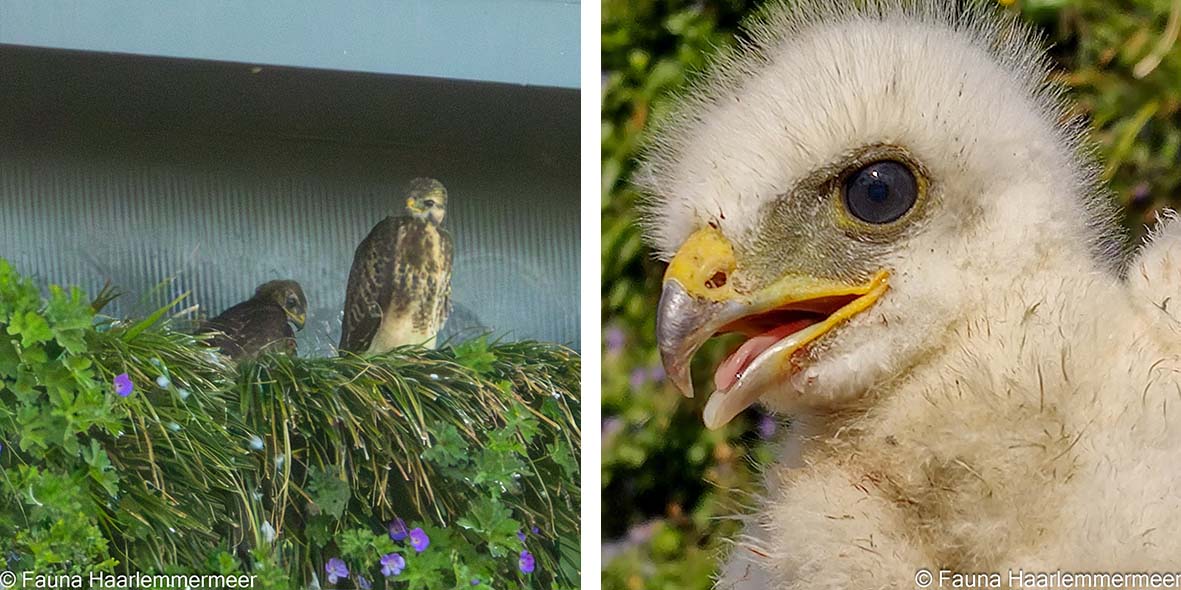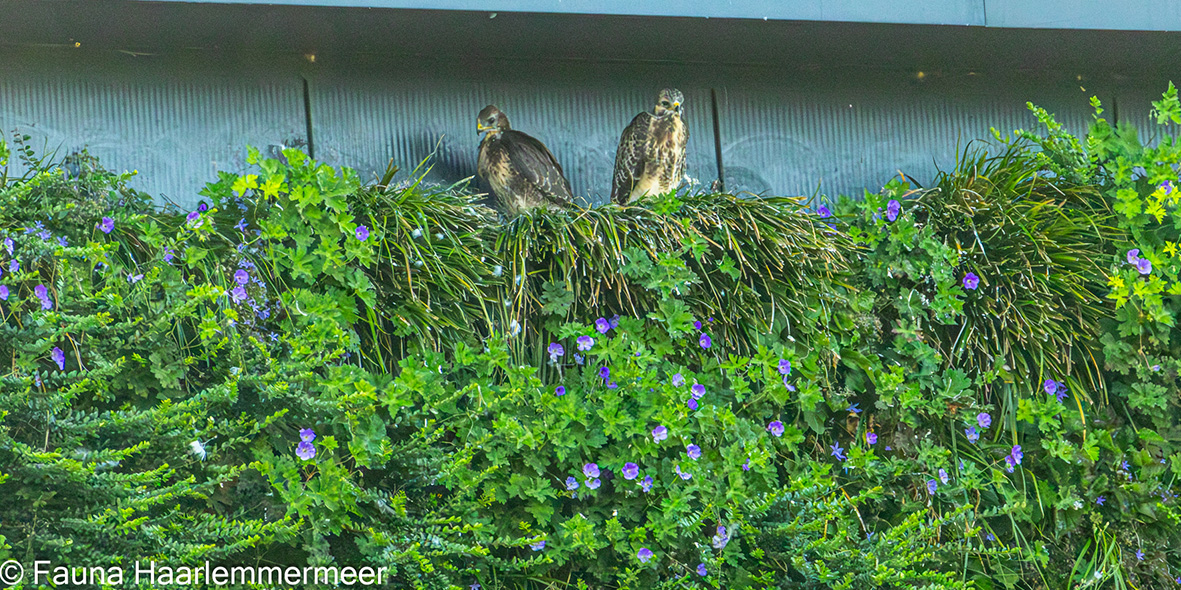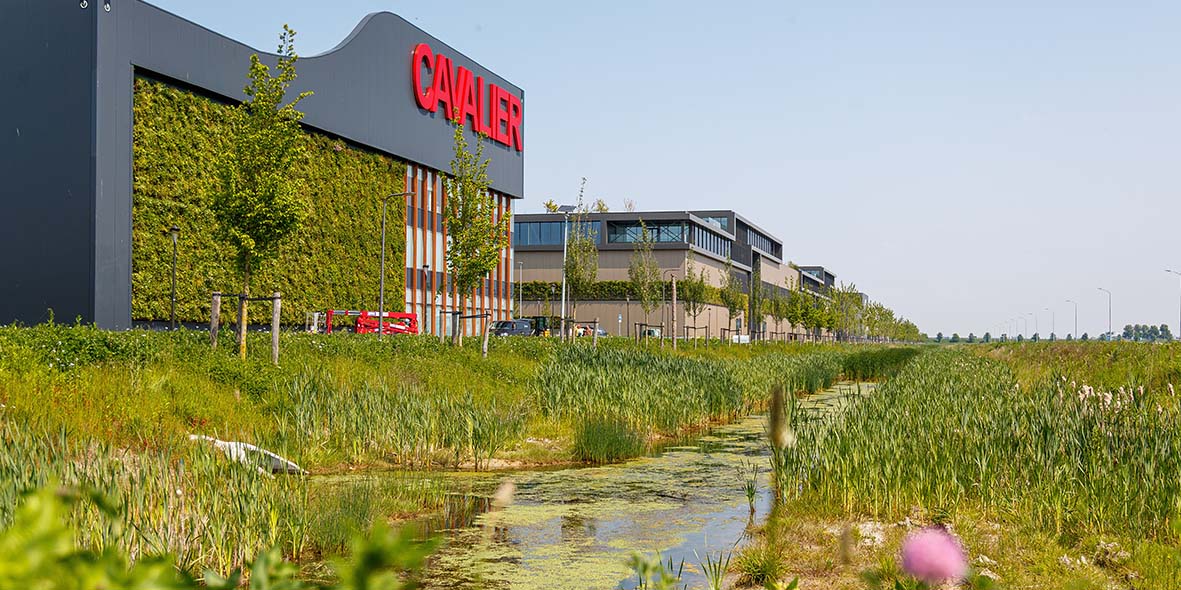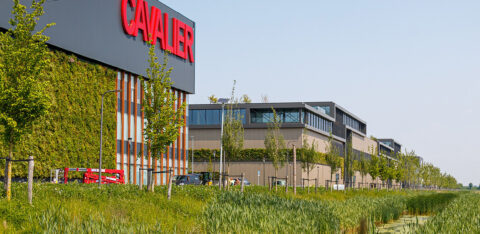Buzzards nest in green façade, a remarkable milestone for nature-inclusive building
22 July 2025A First at Schiphol Trade Park
On the vertical green façade of the Cavalier Logistics building at Schiphol Trade Park in Hoofddorp, a pair of buzzards have chosen an extraordinary nesting site. As far as is known, this marks the first documented case of this bird of prey nesting on a green wall in the Netherlands. The nest is embedded within the vegetation of the Mobilane green façade system and successfully produced two young buzzards.

© Copyright Fauna Haarlemmermeer
Green Façades as Full-Fledged Habitats
Buzzards usually nest high in trees and tend to avoid man-made structures. Their decision to nest within a vertical green system highlights the ecological value of green façades. While smaller bird species have been observed using green walls before, the choice of a larger bird of prey signifies a next step: green façades can now be considered genuine habitats for a wider range of species. The MobiPanel system used here is a modular planting system that supports a diverse range of vegetation. This creates a dynamic ecosystem where insects, butterflies, and birds can all find suitable conditions.
“The discovery of the buzzard nest on the green façade was unexpected and remarkable. It demonstrates the resilience and ingenuity of nature – even in an industrial environment. Thanks to cooperation between involved parties, we were able to safeguard the peace and security of the nest – a beautiful example of nature developing on a man-made structure,” says Corinne Kalisvaart of Fauna Haarlemmermeer, who discovered and monitored the nest.
Shelter and peace amidst business activity
The nest, located beneath an overhang of the building, provided shelter from wind and weather and a wide view of the surrounding landscape, including grain fields, elephant grass, and nearby motorways. Despite daily activity in and around the logistics site, the buzzards were able to breed undisturbed. Remote monitoring by Fauna Haarlemmermeer and the Rijnland Birds of Prey Working Group confirmed the successful hatching of two healthy chicks in late May. The young birds fledged on 11 July.

© Copyright Fauna Haarlemmermeer
Maintenance adjusted for nesting safety
During the nesting period, Mobilane adapted its façade maintenance in close consultation with Fauna Haarlemmermeer. A generous buffer zone around the nest was left untouched, while the rest of the façade was carefully maintained. In this way, nature-inclusivity and professional façade management went hand in hand. The buzzards were able to raise their young without disruption, and the rest of the façade remained in top condition.
“A bird of prey like the buzzard choosing to nest in our green façade is something special. It confirms that vertical greening is not just aesthetic and functional, but also actively contributes to nature-inclusive construction. We are proud that our systems provide space for both flora and fauna – even in busy environments and during maintenance,” says Alexander Ilsink, owner of Mobilane.
Insect richness confirmed by DNA InsectScans
Mobilane conducts DNA InsectScans at several locations on its green façades. These scans use DNA traces to reveal which and how many insect species have visited the façade over the previous two weeks. Recent analyses show that green façades with high plant diversity and a steady water supply attract significantly more insects than nearby conventional greenery. These results confirm the ecological impact of green façades as boosters of biodiversity in urbanised settings.

© Copyright Flying Dutchmen – beschikbaar gesteld door SADC
Successful partnership for wildlife protection
The nest was discovered by Corinne Kalisvaart of Fauna Haarlemmermeer, who immediately took the initiative to ensure a responsible approach. In coordination with the Rijnland Birds of Prey Working Group, Cavalier Logistics and Mobilane, a joint decision was made to keep the nest confidential in order to prevent disturbance. Through careful supervision, remote monitoring and clear on-site guidelines, the buzzards were able to raise their young in peace. Fauna Haarlemmermeer played a key role in coordinating and protecting this unique nesting site in a logistical setting.



